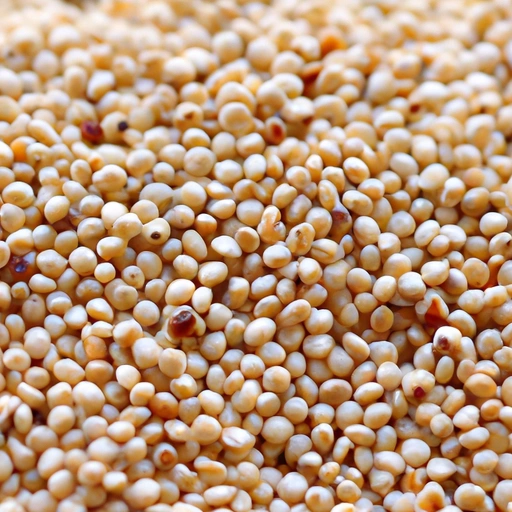Amaranth
Description

Amaranth is a pseudo-cereal that has been cultivated for thousands of years and is known for its highly nutritious seeds. It's not a true cereal grain like wheat or rice but shares a similar set of nutrients and uses in the kitchen. Despite its humble origins, amaranth has become a popular health food in various parts of the world, appreciated for its protein content, essential amino acids, and gluten-free status.
Common uses
Amaranth is used in a variety of food products including flours, flakes, and puffs. It's a popular gluten-free ingredient, and its leaves are also consumed as a vegetable in many cultures.
Nutritional value
Calories
Amaranth seeds contain approximately 370 calories per 100 grams, or about 105 calories per 1/4 cup (30g).
Protein
With roughly 14 grams of protein per 100 grams (about 7 grams per 1/2 cup), amaranth is an excellent source of plant-based protein.
Fat
Amaranth seeds provide around 7 grams of fat per 100 grams, which equates to about 2 grams of fat per 1/4 cup (30g).
Carbohydrates
Carbohydrates in amaranth amount to 65 grams per 100 grams, with about 19.5 grams per 1/2 cup (65g).
Vitamins
Amaranth is a good source of several vitamins including vitamin B6, riboflavin, and folate.
Minerals
The pseudo-cereal is rich in minerals such as iron, magnesium, phosphorus, zinc, and manganese.
Health benefits
As a high-protein and fiber-rich food, amaranth can aid in digestion, muscle building, and satiety. It's also packed with antioxidants, which can help combat oxidative stress and inflammation.
Potential risks
While amaranth is generally safe for consumption, it contains oxalates which can contribute to kidney stone formation in susceptible individuals. As with any food, moderation is key.
Common recipes
Amaranth grain can be used to make porridge, granola, or integrated into salads, soups, and stews. Amaranth flour is also used in gluten-free baking.
Cooking methods
The seeds can be boiled, popped like popcorn, or added to baked goods. The leaves are often steamed, sautéed, or incorporated into stir-fries.
Pairing with other ingredients
Amaranth pairs well with sweet and savory flavors alike. Combine it with fruits and nuts for breakfast dishes or mix it with beans and vegetables for hearty meals.
Summary
Amaranth is a versatile and nutritious ingredient that caters to various dietary needs. It's packed with protein, essential amino acids, and is an excellent gluten-free grain alternative. Although it fell out of favor in the past, amaranth has made a significant comeback as a health food and is now used worldwide in an array of culinary applications.